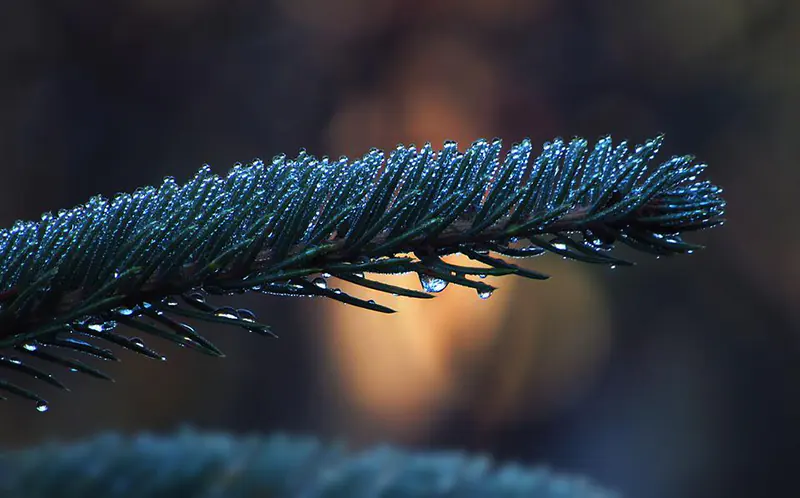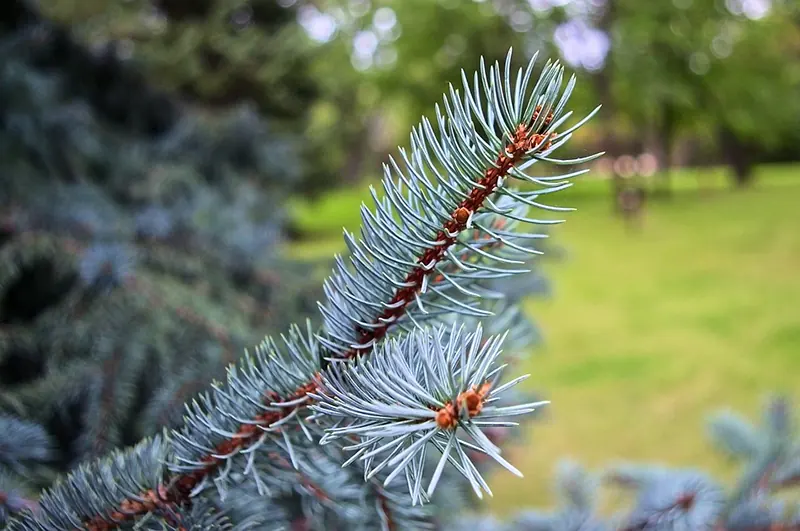How to Save a Dying Blue Spruce
The Blue Spruce (Picea pungens’ glauca’) is a stunning tree with the most beautiful silvery-gray needles. The stiff needles have made it a bonsai favorite, but it will grow to 50 feet or more in the garden. If your bonsai doesn’t look too good, we have some tips on how to save a dying blue spruce.
Blue Spruce as a Bonsai
These conifers made excellent bonsai specimens, and their silvery needles made a dramatic splash.
The Blue Spruce is a bushy evergreen conifer that naturally has a very compact conical shape. The foliage is dense and surrounds a greyish trunk that thickens attractively with age to have a ridged appearance. The roots spread widely from the trunk and are close to the surface.
This tree should grow outdoors as it must be exposed to freezing temperatures in winter.
Training a Blue Spruce can be difficult as the branches tend to return to their old position once wires are removed. Pruning should be done just before the tree goes into its dormant state for winter so it doesn’t bleed resin too much.
This tree will not make a successful broom-style specimen, but the straight trunk, windswept and multi-trunk are good style options.
Causes For And How To Save A Dying Blue Spruce
The Blue Spruce is sensitive to fungal infection but is also picky about where and how it is grown. So your first step is to work out where the problem lies.
If the tree appears to be dying from the tip down, the most likely cause is wind damage. This spruce does not like being exposed to dry winds, and dead needles at the top of the tree can indicate wind damage. Move your tree into a more protected spot and see if the damage is rectified.
Spruce also detest soggy roots, so check that the drainage in your pot is working correctly and that the roots are not standing in water. Only water your spruce when the soil is dry.
If neither of these seems to be the case, you could be facing fungal infections. Two primary fungal infections affect the blue spruce. These are Cytospora canker or Rhizosphaera, or Stigmina Needle Cast disease.
Cytospora Canker
If the tree appears to be dying from the ground up, with whitish resin flowing from the branch, it is most likely Cytospora canker, a fungal infection that is difficult to treat. Fungicides do not work on this infection. You must remove the infected branches by cutting at least 4″ away from the dead area. This is unlikely to cure the infection; you will slow it down. Be sure to carefully disinfect the tools you use to cut these branches to prevent cross-infection with other trees.
Unfortunately, these fungal infections can live in the tree for a long time before it becomes apparent. While the tree is healthy and vigorous, the disease gets no opportunity to flourish, but if the tree becomes stressed, the infection can break out.
You may be lucky enough to stem the infection if treated early, but this canker can kill the tree.
Rhizosphaera or Stigmina Needle Cast Disease
Both Rhizosphaera and Stigmina are fungal infections that cause the tree’s needles to turn brown and fall off.
The Blue Spruce will recover from these infections, but it does take a long time. Expect to wait up to two years for the tree to recover.
Spraying the tree with a fungicide containing Copper hydroxide as the active ingredient will control a Rhizosphaera and Stigmina infection.
Spruce Sawfly and Spruce Budworm
The last culprits you can consider are the Yellow-headed spruce sawfly and the spruce budworm.
The larval stage of these insects feeds on the new needles of the VBlue Spruce and, if left untreated, can decimate the crown of your trees. They will eventually kill the tree if left untreated.
The sawfly larva looks like a tiny green caterpillar, while the Spruce Budworm is a small brown caterpillar. These caterpillars eat the new growth and spin webs at the ends of the branches, especially in the tree’s crown.
To treat these pests, spray with an insecticide containing pyrethrum or malathion. Also, as your Blue Spruce bonsai is a small plant, you can spend time and pick the caterpillars off with tweezers if you do not wish to use an insecticidal spray.
Final Thoughts
Blue Spruce make outstanding bonsai specimens, and their unusual blue-grey foliage adds a dramatic component. Unfortunately, fungal infections are very difficult to treat and stem the spread of the condition, but it is worth the attempt for a prize specimen.
As with all diseases and pests, keeping a close eye on all your trees will give you an early warning of any potential problems so you can take action quickly.






